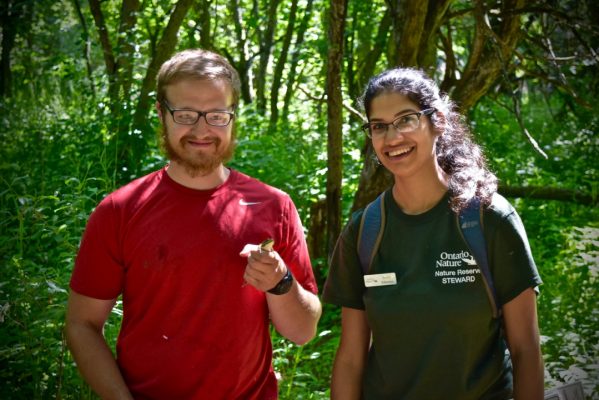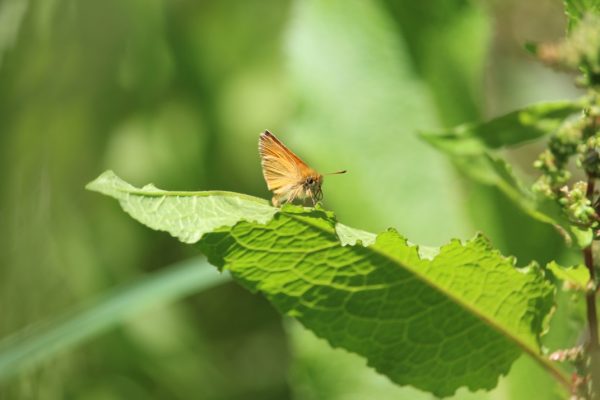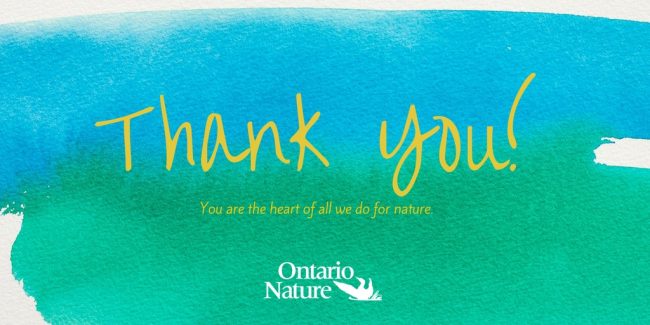Ontario Nature Blog
Receive email alerts about breaking conservation
and environmental news.
© Lora Denis
July 18, 2016–Stephanie Muckle
Community Science•Nature Reserves•Pollinators•Reptiles and Amphibians
Volunteers learn how to catch and identify butterflies © Lynn Miller
Late last month, Ontario Nature’s conservation staff hosted a BioBlitz at George G. Newton Nature Reserve, near Goderich. The day kicked off with two sessions, one focused on reptiles and amphibians and the other focused on plants. Jory Mullen of the Huron Stewardship Council led the amphibians and reptiles group. They found six green frogs, one leopard frog and four wood frogs in the stream running through the reserve. They also found nine red-backed salamanders in the forest.
I joined the plant group led by botanist Erin Mallon. We recorded 69 wildflower, shrub, vine and tree species. I was impressed by the abundance of berry-producing plant species, which are important food sources for wildlife. These plants included woodland strawberry, wild red raspberry, riverbank grape, thimbleberry and mulberry. Pollinator friendly wildflowers such as common milkweed, selfheal, Virginia rose, common elderberry and woodland sunflower were also abundant.

The diversity of flowering plants was echoed in the richness of butterfly species we recorded in the afternoon. Huron Fringe Field Naturalists member, Tom Lobb helped participants identify butterflies while teaching them about butterfly ecology. I was in awe of Tom’s ability to identify moving butterflies at lightning speed while I, on the other hand, needed a pair of binoculars and a stationary butterfly to even see wing colour patterns. We identified eleven butterfly species in total, including one at-risk species.
BioBlitzes aim to identify as many species as possible within a set period of time. For me, a BioBlitz provides an excellent opportunity to engage community members as citizen scientists and show them how much diversity there is close to home. The species lists that are generated are incredibly valuable, as they give us an indication of the quality of habitats within the study area.

Thanks to the efforts of our expert biologists and enthusiastic volunteers we identified 102 species and were able to expand our species list for the Newton Nature Reserve. All 11 of the butterfly species we observed were new records. Three amphibians, fifteen birds and one mammal were also new. In total, we added 63 species to our list for the property. Thank you to everyone who joined us for the day. We hope to see you again soon.
A big thank you to our funders, TD Friends of the Environment Foundation (TD FEF) and Ontario Trillium Foundation for making this event possible!


Proposed 413 Route, Old School Road with farm and escarpment view © Noah Cole